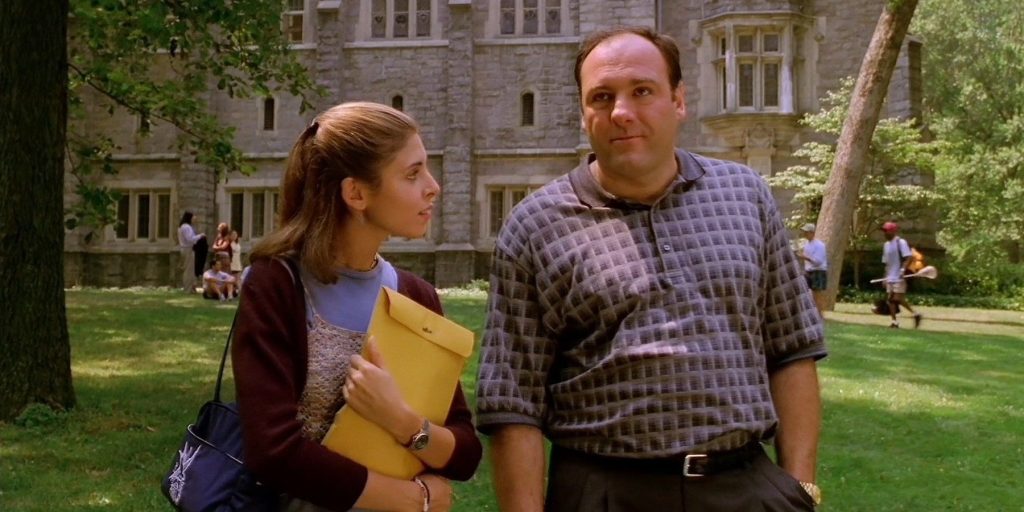“October Sky” (1999): A Soaring Tale of Dreams and Determination – Film Review

Released in 1999, “October Sky” stands out as one of the most heartwarming and inspirational films of the 1990s, yet it remains relatively overlooked in discussions of great cinema from that decade. Directed by Joe Johnston, the film is based on the true story of Homer Hickam, a coal miner’s son from West Virginia, who is inspired by the launch of Sputnik 1 to take up rocketry against his father’s wishes. With breakout performances from Jake Gyllenhaal and Chris Cooper, “October Sky” not only explores the dynamics of dreams and family expectations but also beautifully captures the essence of a 1950s small town.
Plot and Character Development
“October Sky” follows young Homer Hickam (Jake Gyllenhaal) as he transitions from a high school student expected to follow in his father’s footsteps into the coal mines, to an aspiring rocket scientist. Encouraged by his teacher Miss Riley (Laura Dern), Homer and his friends embark on a journey of experimentation and discovery, crafting homemade rockets in the hopes of winning a national science fair.
The film excels in its portrayal of interpersonal relationships, particularly between Homer and his father, John Hickam (Chris Cooper), whose skepticism about rocketry underscores a generational clash between tradition and aspiration. This conflict drives the narrative, providing a deep emotional core to the story. Chris Cooper’s portrayal of a stern yet caring father captures a complex character who is conflicted by his desire to protect his son and his fear of seeing him fail.
Jake Gyllenhaal’s performance as Homer is both compelling and relatable, marking his rise as a significant talent in Hollywood. His portrayal of determination, enthusiasm, and vulnerability resonates with anyone who has ever dared to dream big.
Behind the Scenes and Production Details
Directed by Joe Johnston, known for his work on “Jumanji” and later “Captain America: The First Avenger,” “October Sky” was crafted with a keen eye for historical detail and emotional depth. The film was shot in Tennessee, chosen for its resemblance to 1950s Coalwood, West Virginia. The production team went to great lengths to authentically recreate the era, from the vintage cars lining the streets to the period-appropriate costumes.
The rocket launch sequences, a central element of the film, were a blend of practical effects and early CGI, showcasing the team’s ingenuity without the benefit of today’s advanced visual effects technologies. These scenes were meticulously planned to reflect the trial-and-error process that Homer and his team underwent, highlighting their persistence and evolving understanding of rocket science.
Soundtrack and Musical Score
The musical score by Mark Isham complements the film’s nostalgic and uplifting tone. Isham’s compositions play a pivotal role in conveying the emotional and dramatic arcs of the story, with subtle orchestrations that underscore the film’s most poignant moments, particularly during the rocket launches and the more intimate father-son exchanges.
Exploring Key Moments and Artistic Nuances
“October Sky” masterfully captures the emotional and technical challenges faced by Homer and his team, the Rocket Boys, as they pursue their dreams of launching a rocket. One particularly memorable scene is their first successful launch. The mix of trepidation and triumph conveyed through the boys’ reactions not only highlights their collective journey of persistence but also serves as a pivotal turning point in the film. The launch scenes are dynamically shot, showcasing Joe Johnston’s expertise in creating visually captivating moments that resonate with viewers.
Another key moment is the confrontation between Homer and his father in the mine. This scene is charged with emotional intensity and beautifully acted by Gyllenhaal and Cooper. It illustrates the generational and ideological divide between the two, with John Hickam’s practicality and skepticism clashing with Homer’s aspirations and optimism. The mine setting, dimly lit and confining, contrasts sharply with the expansive skies under which the rocket launches take place, symbolizing the constricting life that Homer wishes to escape.
Technical Craftsmanship in Filmmaking
The film’s cinematography, helmed by Fred Murphy, deserves special mention. Murphy uses the camera to complement the story’s emotional depth, employing close-ups and wide shots to enhance key moments. The wide shots of the rocket launches against the vast, open sky effectively convey a sense of liberation and possibility, while close-ups capture the intricate emotions playing across characters’ faces, particularly in scenes of family tension or personal revelation.
The production design and costume design also play crucial roles in anchoring the story in its time and place. The meticulous attention to detail ensures authenticity, from the Hickams’ modest home interiors to the worn-out work clothes of the miners, reflecting the economic hardships of the era.
Cultural Impact and Educational Value
Since its release, “October Sky” has been lauded for its educational value, particularly in inspiring interest in science and engineering among young viewers. The film is often screened in schools as part of curriculum related to history, science, and personal development. It serves as a motivational tool, illustrating the impact of education, perseverance, and the pursuit of one’s passion.
The film’s depiction of a small town’s social dynamics and the looming presence of the coal mining industry offers a commentary on the socio-economic factors that shape the lives of its inhabitants. This aspect makes “October Sky” not just a film about personal achievement but also a reflective look at American industrial life and its effects on individual aspirations.
The Performances Revisited
The performances, particularly those of Jake Gyllenhaal and Chris Cooper, are integral to the film’s success. Gyllenhaal’s portrayal of Homer is imbued with a heartfelt passion that makes his character’s journey from a high school student to a budding scientist profoundly compelling. Chris Cooper, as John Hickam, delivers a complex performance that skillfully balances stern authority with underlying concern and love for his son, adding layers to a character that could easily have been a one-dimensional antagonist.
Concluding Thoughts on “October Sky”
“October Sky” remains a poignant and uplifting film that captures the essence of human aspiration. Its narrative, while set in the past, carries timeless themes of innovation, resistance against odds, and the pursuit of knowledge. The film not only celebrates the triumphs of its protagonists but also honors the spirit of curiosity and the relentless pursuit of one’s dreams, regardless of the obstacles.
As “October Sky” continues to inspire and educate, its place as a significant film in the annals of American cinema is assured, marked by its ability to resonate emotionally with audiences and encourage them towards greater personal and academic pursuits. In an era of rapid technological advancements and ongoing challenges in global education, the story of Homer Hickam and his rockets is more relevant than ever, serving as a beacon of inspiration and a reminder of the power of determination and dreams.




